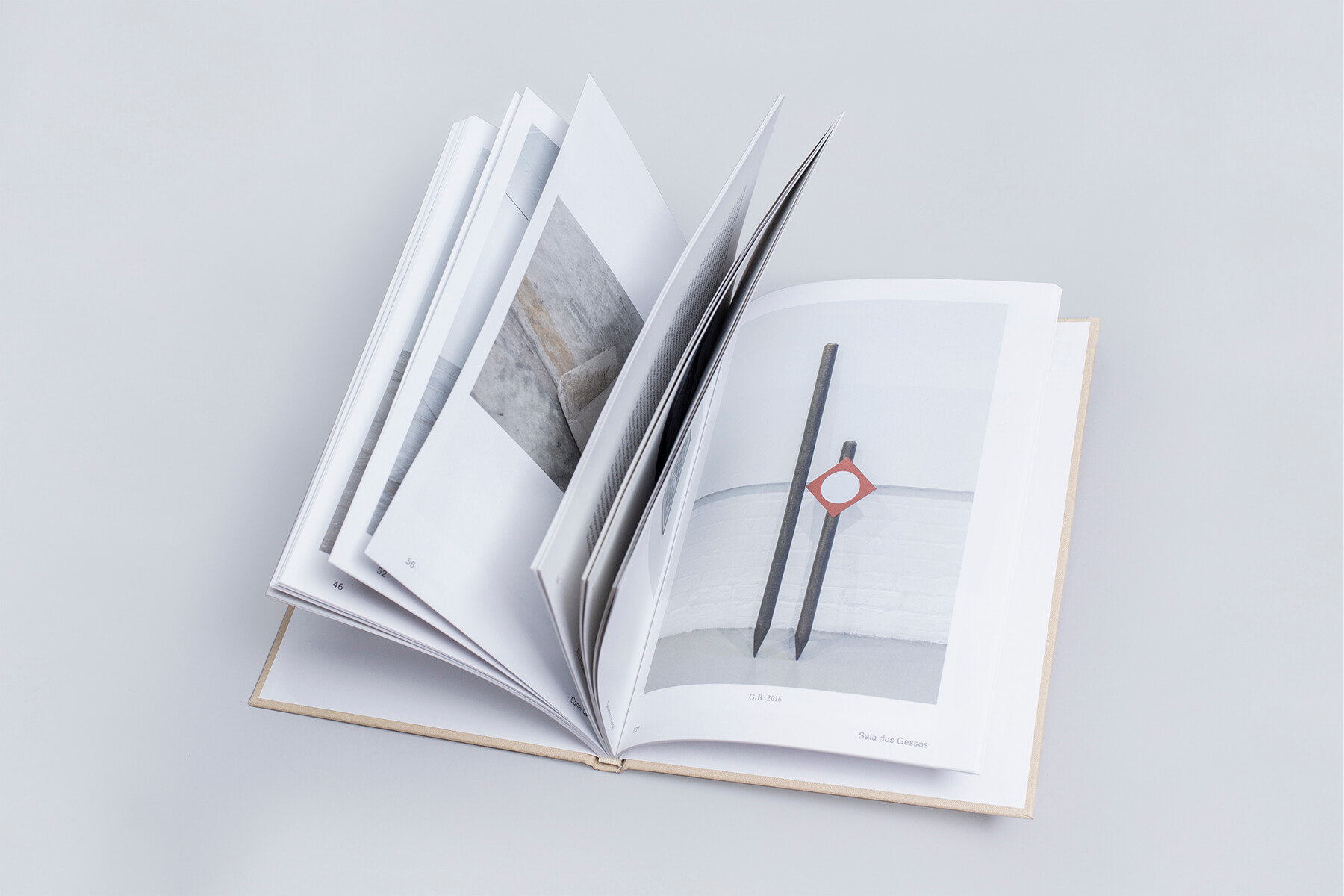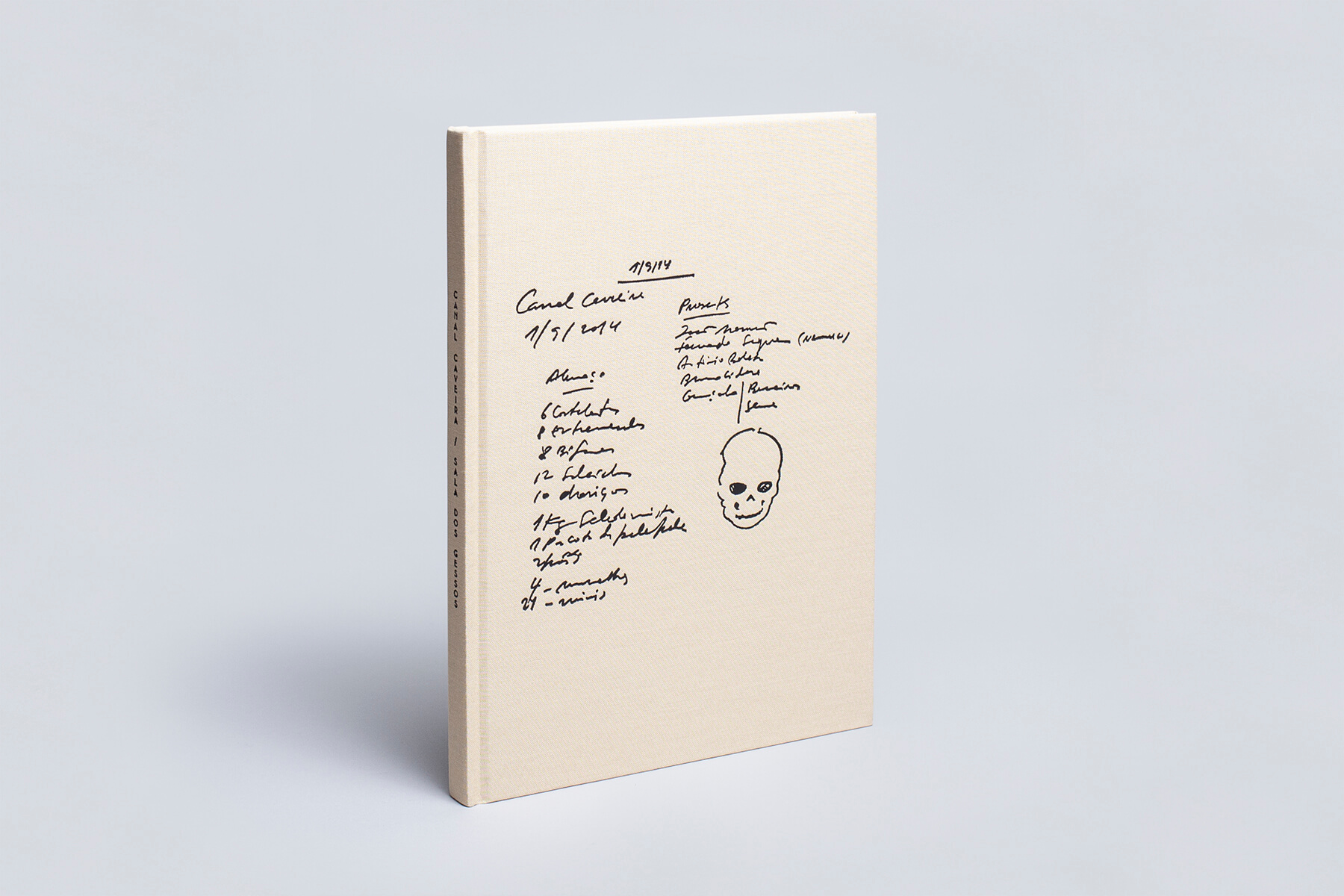This catalogue documents the exhibitions Canal Caveira, which took place at Torreão Nascente da Cordoaria Nacional between November 15, 2015 and March 20, 2016, and Sala dos Gessos, which was on view at Curto Circuito, Espaço Arte-Tecnologia, Museu da Eletricidade, between March 11 and May 22, 2016. Both exhibitions featured work by António Bolota, Bruno Cidra, Gonçalo Barreiros and Gonçalo Sena. The publication contains photographic documentation of both exhibitions, a text by Jorge André Catarino, and correspondence exchanged between the curators of the exhibition at the Museu da Eletricidade Ana Anacleto and João Pinharanda, and João Mourão, the curator of the exhibition Canal Caveira.
“Canal Caveira is an improbable place, true to the logic of cadavre exquis we discover in its name, composed by a pair of strange but oddly matching elements. It is a non-definitive place, somewhere where you are always on the way to: a place disintegrating into a road, a road slowing down into a place. Its vitality resides in its strangeness and ambiguity, in its atypical quality.”
– Jorge André Catarino
“This first moment of fruition is, in the case of these four artists, a moment of ample communion. The interested and generous way in which they observe the creations of one another, the modes in which they intervene in the technical processes of the others, the availability they demonstrate in the questioning of certain conceptual aspects in relation to finished works or those still in process of production, places them soundly, I would say, in the territory of sharing very much close to the idea of community which João Mourão was speaking of.”
– Ana Anacleto
“More and more, I believe in the possibility of a work which is slower, in a slow curating, in making it with time and with the artists. Of the different models I have tried and, obviously consonant with the projects, it pleases me the possibility of the artists confronting the space and having time to produce in the space, and for the space itself to respond to and to confront the artists.”
– João Mourão
“And, so I return, to the material: what does coincide between the aforementioned histories and to those of our artists in this primordial place ordained by the material of/in the work, the way in which it conditions the resulting forms (representative or not, mimetic or not, abstract or not) and the play which is established, be it with the sensorial and visual aspects of the artwork (of the artists with the work) or with the semantic values that the pieces (either in this or that medium) acquire or set into motion.”
– João Pinharanda





